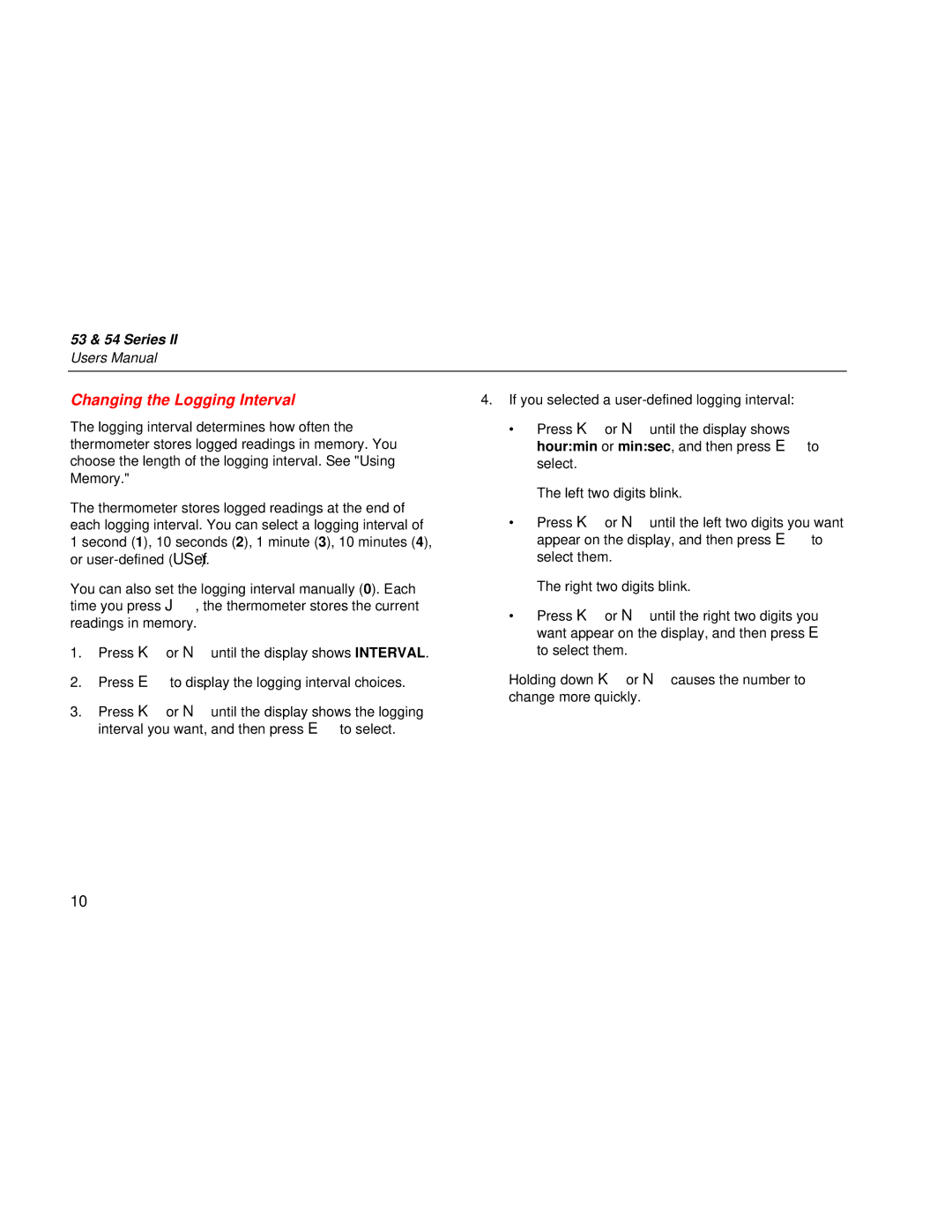53 & 54 Series specifications
The Fluke 53 and 54 Series are advanced digital thermometers designed for professionals in various industries such as HVAC, electrical, manufacturing, and more. These thermometers stand out for their precision, ease of use, and robust build, making them ideal for both field and laboratory environments.One of the main features of the Fluke 53 and 54 thermometers is their high accuracy. With a resolution of 0.01 degrees Celsius, these devices provide reliable and precise temperature measurements critical for quality control and testing applications. The Fluke 54 includes a dual-channel measurement capability, allowing users to connect two temperature probes simultaneously. This feature is particularly useful when comparing temperatures in different locations or monitoring the temperature differential across a system.
Another significant advancement in the Fluke 53 and 54 Series is the inclusion of advanced data logging capabilities. The Fluke 54 can store up to 500 readings, which can be viewed directly on the device or downloaded to a PC for analysis. This feature streamlines data collection and enables users to keep accurate records for compliance or reporting purposes. The functionality is essential in applications where ongoing temperature monitoring is necessary, such as in food processing or pharmaceutical manufacturing.
Both models are equipped with a large, bright LCD display, facilitating easy reading of measurements, even in low-light conditions. The rugged construction of these thermometers ensures that they can withstand harsh environments, making them suitable for use in industrial settings or outdoor applications. Their design also incorporates an intuitive user interface, providing quick access to essential functions such as minimum and maximum temperature measurements, relative temperature measurements, and hold functions for capturing readings.
Moreover, the Fluke 53 and 54 Series support multiple thermocouple types, including K, J, T, E, N, S, and R types. This versatility allows users to select the best probe for specific applications, further enhancing their utility across diverse temperature monitoring tasks.
In conclusion, the Fluke 53 and 54 Series thermometers are engineered for precision and versatility. With advanced features, rugged designs, and the ability to log and display critical data efficiently, these thermometers are indispensable tools for professionals who demand reliable temperature measurements in their work. Whether you are monitoring HVAC systems, conducting scientific research, or ensuring product quality, the Fluke 53 and 54 Series provide the accuracy and reliability needed for successful outcomes.
